An Explanation
by Jess Erdman, Content Marketing LeadMay 2023

Boring. Uncurated. Dull. Uninspired.
Despite all of the talk about AI’s advanced capabilities, AI fashion stylists still lack advanced personalization, making styling suggestions not only limited, but not personalized and too general.
When asked for suggestions for a dress to wear to a spring wedding, ChatGPT responds with general suggestions that don’t resonate with specific preferences:
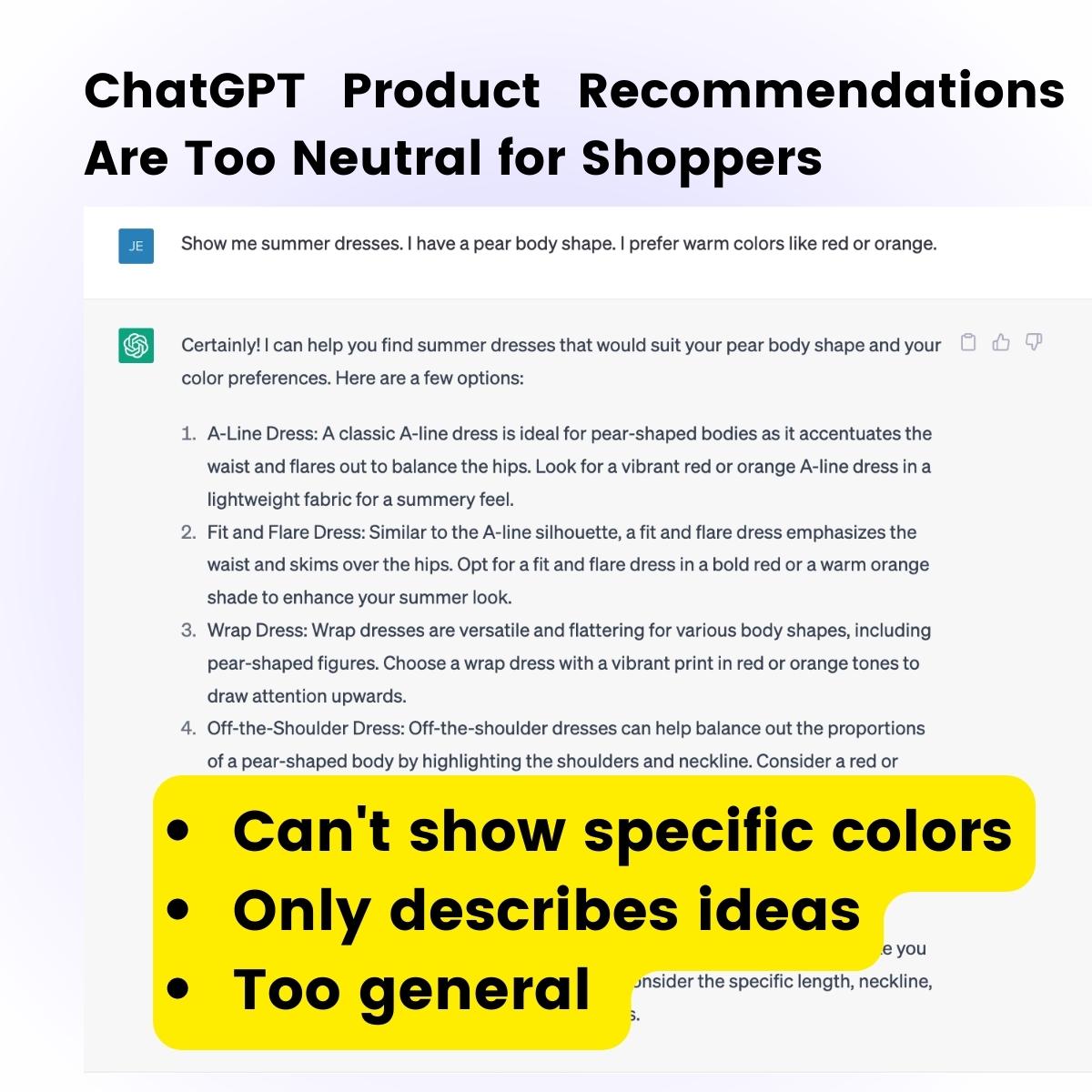
In addition to being too long-winded and lacking fashion-forward suggestions, ChatGPT’s text-only version of an AI fashion stylist only answers with long-winded, general suggestions. That makes it difficult for shoppers to visualize the products and understand the fit and style.
But, we’ve created a game-changer with YesPlz’s GPT Fashion Stylist.
By training our fashion AI on what shoppers value the most: silhouette and style, we’re able to offer more personalization than ChatGPT and other fashion AI stylists.
By taking personalization to the next level, YesPlz can:
The key difference?
YesPlz’s AI makes curated product recommendations based on our own criteria, including style preferences, silhouette, and design.
Other tools are overly simple, bombarding users with questions until it matches Open AI’s recommendations to product catalogs, without considering more complex styling and fashion preferences.
YesPlz built an AI personal stylist that goes beyond what any other tool is capable of, making truly curated, stylish recommendations based on our own machine learning.

Here are more details:
When shoppers first start to use the AI personal stylist by YesPlz AI, they’re given the option to take a short, 4-question fashion quiz to identify their style preferences.
The quiz questions include:
A question about their body shape: Based on our unique user interviews, we learn that shoppers filter by silhouette first, and value clothing that flatters or hides specific body parts:

A question about color preferences, from neutral to warm or cold:
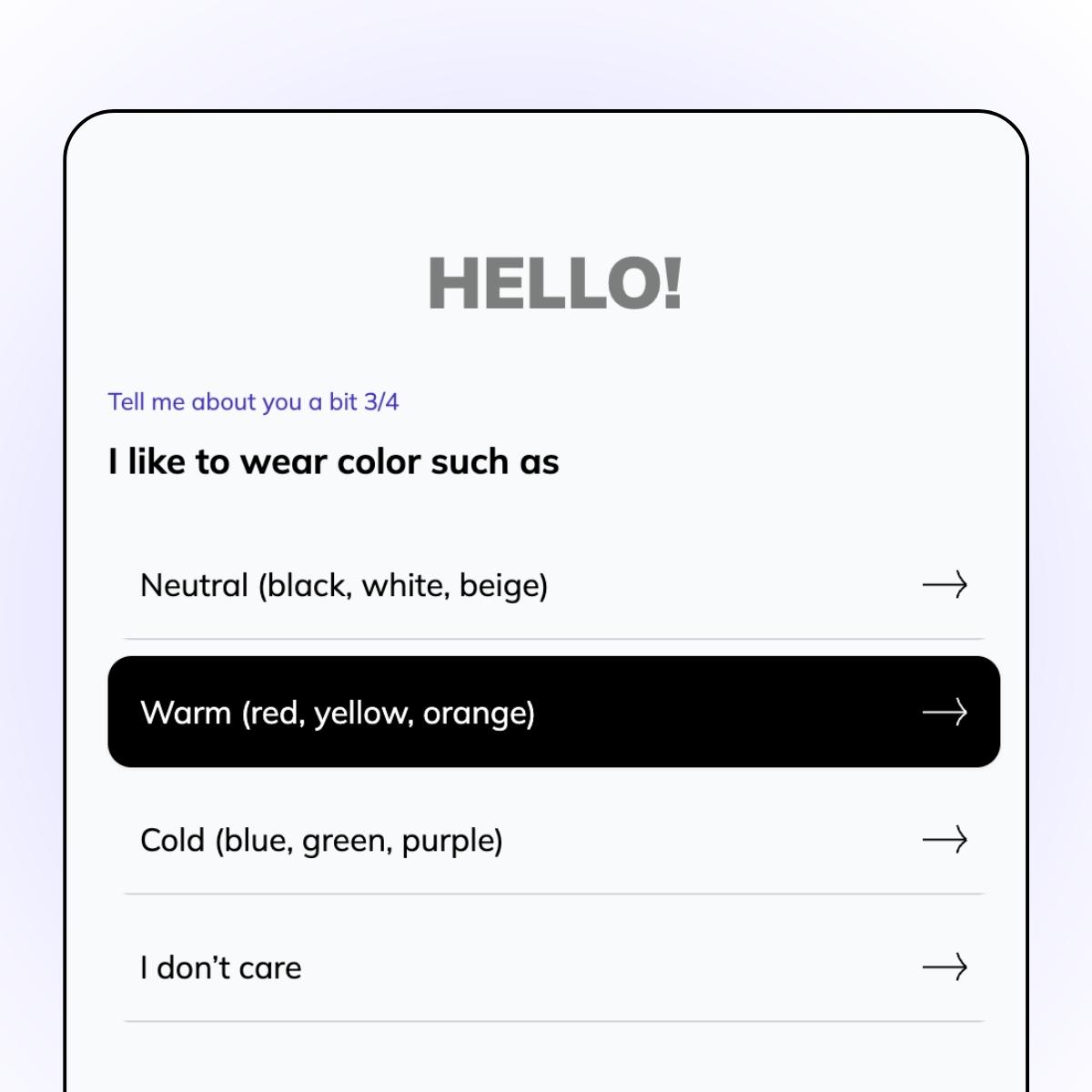
A question about their style/thematic preferences: Shoppers also tend to have a specific style or occasion they have in mind when exploring products, from casual to trendy
Pattern or detail information: Shoppers have strong preferences for patterns and details
Then, shoppers are directed to AI-generated prompt ideas based on the most popular prompts to start using the AI personal stylist
We selected: romantic, warm colors and no pattern. Then, we asked for suggestions for a dress to wear to a formal event.
Here is what YesPlz AI’s personal stylist recommended:
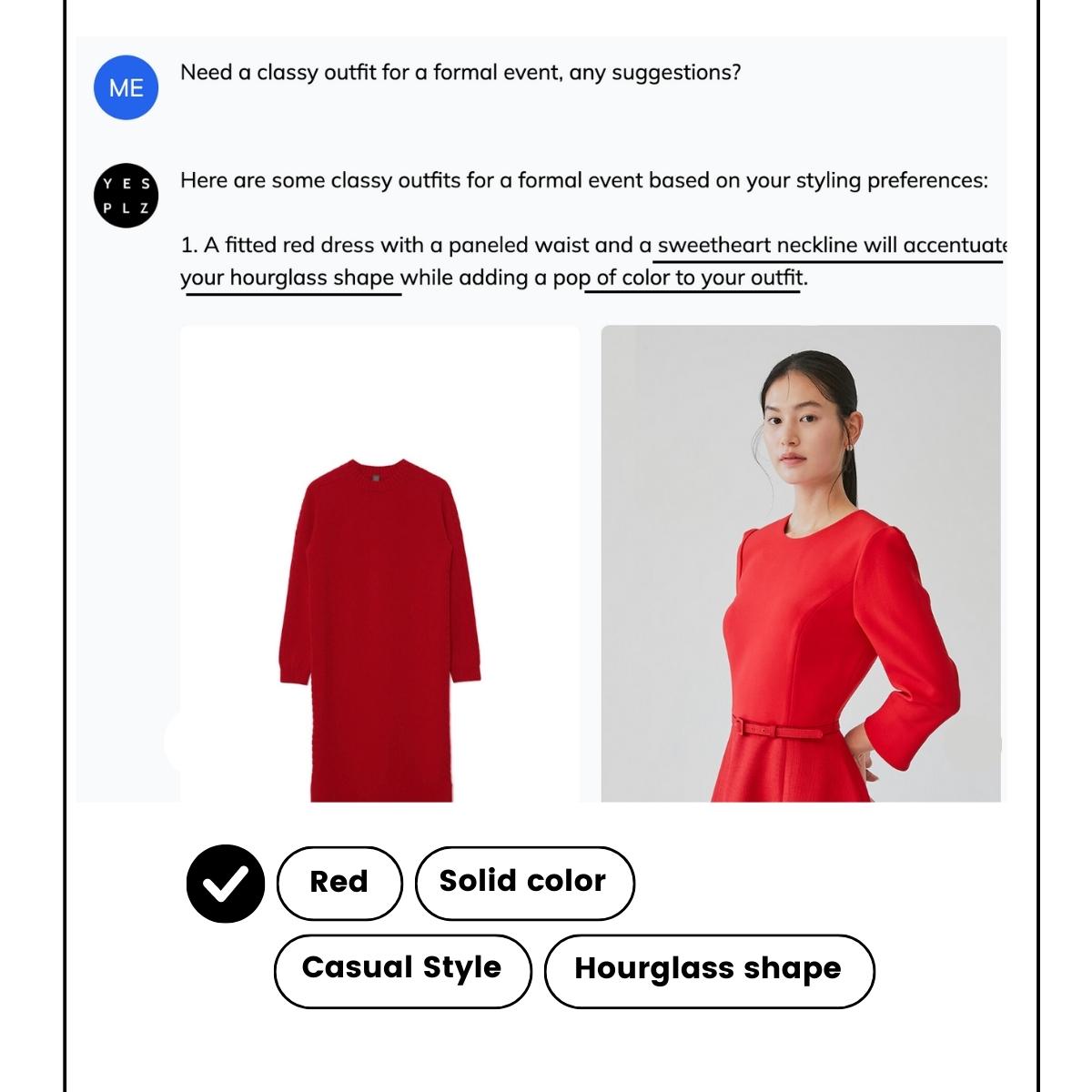
Our AI can make complex recommendations, building outfits based on silhouette, design, theme, and occasion preferences. Then, it can go a step further, and recommend “style with” items–creating a fully integrated shopping experience.
Unlike OpenAI, we can remember previous shopper conversations and have information ready for personalization. By using a deep learning model to remember conversations, we can better understand shopper preferences, and have products ready for personalization.
First, shoppers interact with our AI stylist, either through pre-written popular prompt questions, or their own style questions.

Then, they’re given easy-to-understand, clickable product recommendations.
If a shopper likes the product recommendation, she can click the “heart” button to favorite the item.
Products are then stored under “my favorites,” where shoppers can easily access their previously favorited products. After a shopper clicks on "curation," she sees customized product suggestions based on her favorited items.

Curation allows retailers to expand shoppers’ product discovery, solving the problem that many retailers face: insular discovery.
An AI personal stylist like YesPlz AI means that shoppers get specific, fashion-focused recommendations based on their previous likes.
Let’s compare an AI personal stylist to a similar tool with and without personalization:
Without personalization:
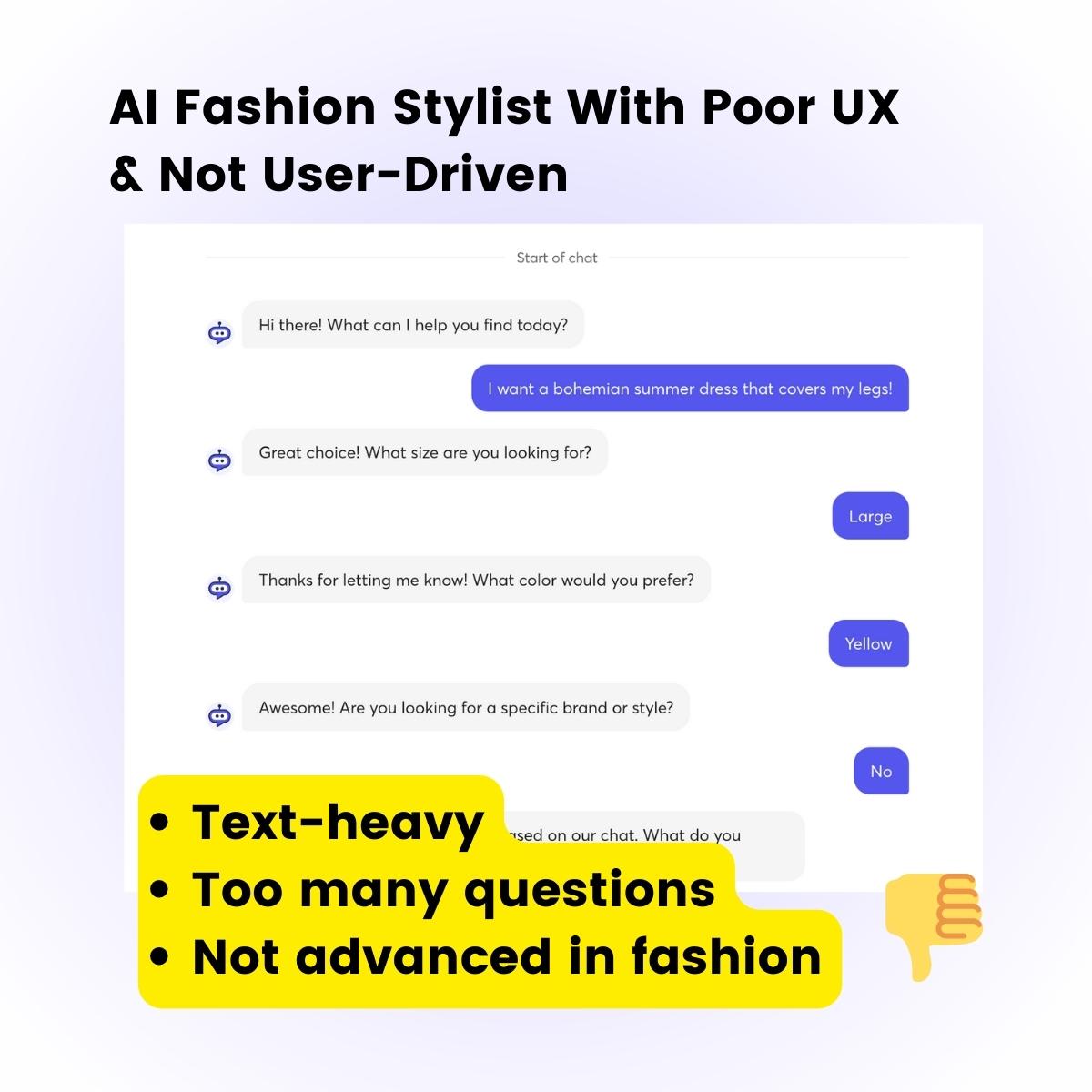
The product recommendations themselves are inaccurate (the original request was for a yellow, bohemian-style maxi dress), and do not have any specific personalization.
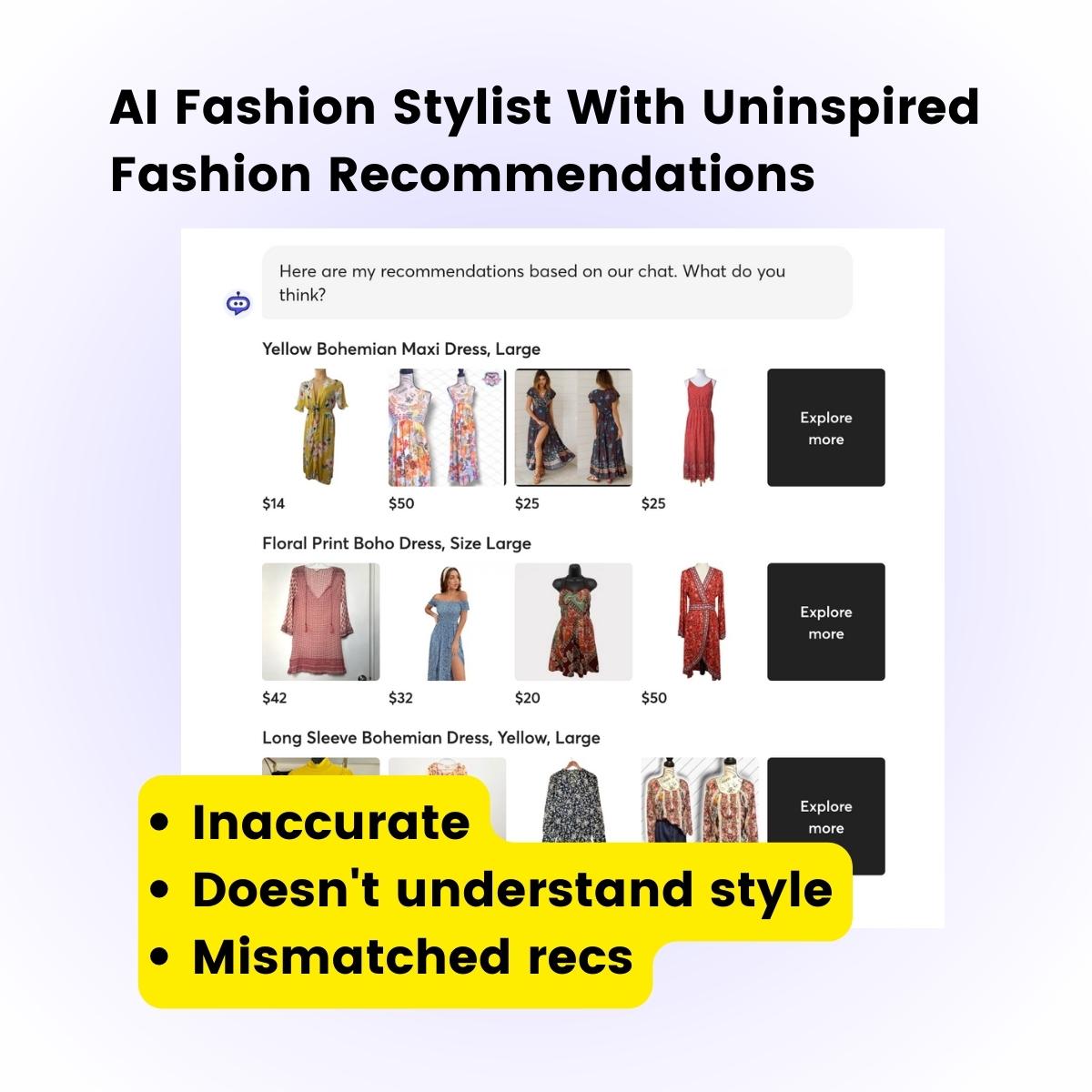
Compare this to YesPlz AI Personal Stylist, which is UX-friendly and can understand any style prompt. And, styling suggestions are always fashionable, rooted in what the user prefers.
Here’s the same example:


First, shoppers can ask any type of complex style question.
Then, they receive fashion recommendations that are not only personalized, but explain more about the products.
Here, shoppers see products that are similar to their favorites, but different enough to spark discovery.
The UX journey is seamless and delightful, and shoppers leave inspired to explore retailer catalogs.
If other AI styling tools are unable to provide high-level personalization, how does YesPlz AI do it?
The answer: By combining powerful AI technology, we’ve created a GPT Fashion Stylist that can generate high-level personalization for our customers, and remember each shopper's preferences.
YesPlz’s GPT Fashion Stylist features technology in:
AI Image Tagging: Advanced computer vision quickly scans product catalogs to tag product attributes, giving us the fundamental information necessary to curate recommendations
Generative AI: We utilize Open AI’s technology to generate prompt responses
NLP: Natural Language Processing gives us the ability to understand prompt semantics without requiring shoppers to modify their language to accommodate technology.
Proprietary Fashion Transformer: Exclusively developed by YesPlz AI, our fashion transformer translates Open AI’s language, identifying the most optimal product matches in seconds.
YesPlz’s product recommendations aren’t a copy of Open AI–we use our own AI to generate the best product suggestions according to shoppers’ unique styles, silhouettes, and thematic preferences.
Shoppers want to have a memorable, curated experience–and by remembering their preferences, YesPlz’s AI personal stylist is a step above the rest.
Try out GPT AI Stylist today, and see for yourself how it can help your eCommerce convert shoppers.
Written by Jess Erdman
Content Marketing Lead
I'm passionate about creating cool content. The best part? I get to learn new things about fashion tech and ecommerce everyday. Have an idea or opinion about this article? Reach out at jess@yesplz.ai
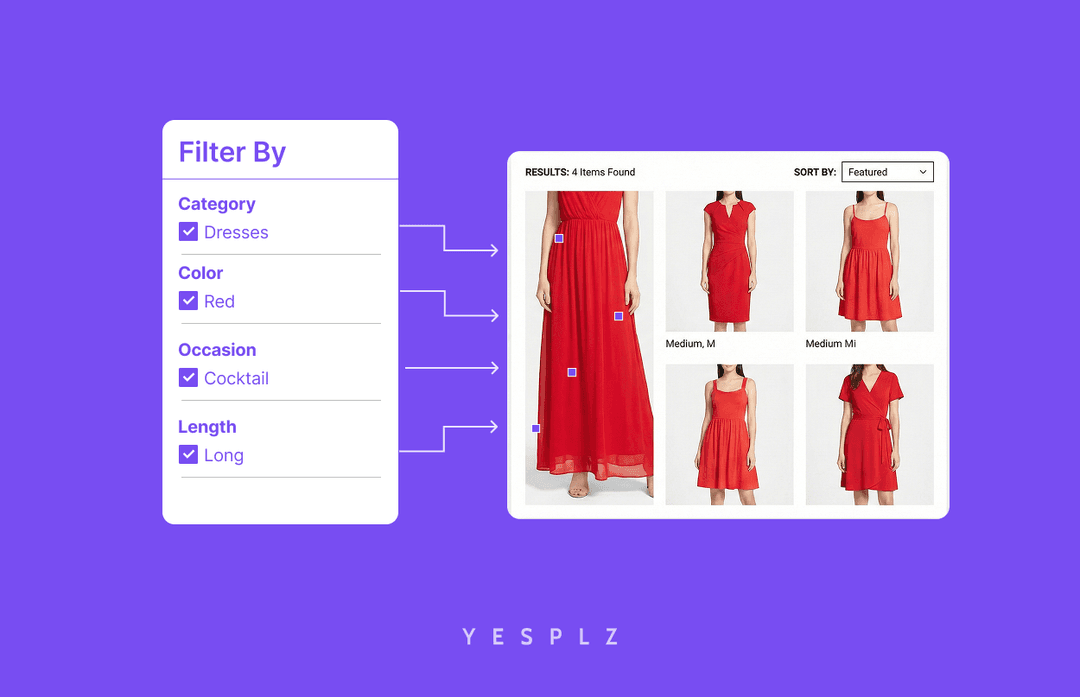
Stop losing sales to poor product filtering. Discover how AI simplifies creating Shopify filters, saving you 25-50 hours per 100 products.
by YesPlz.AI
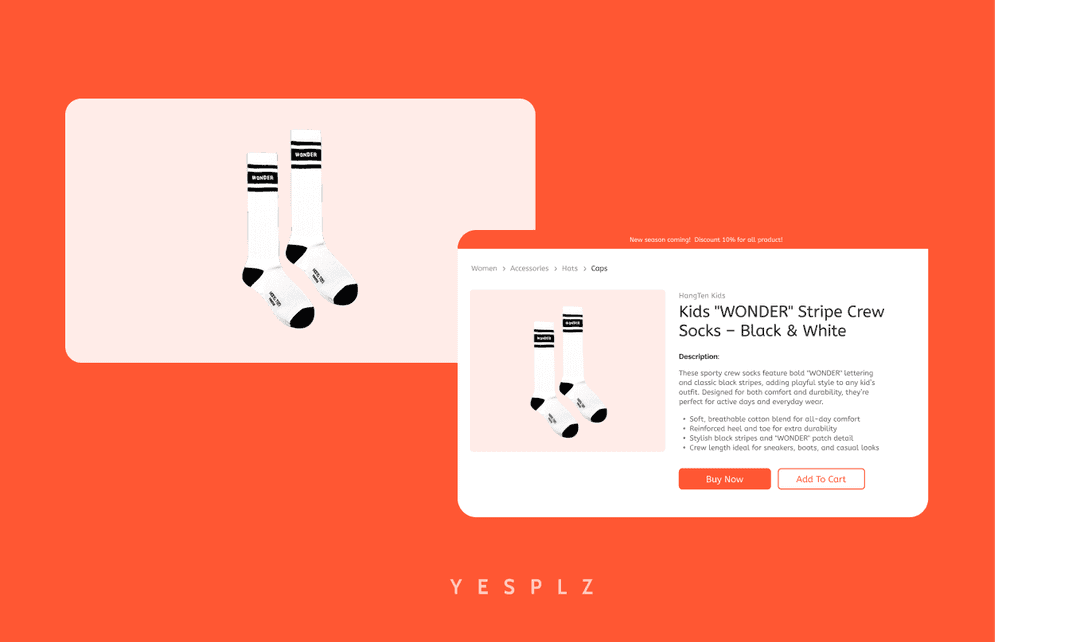
Automate Shopify product pages and cut 50–100 hours of manual work. AI generates product titles, descriptions, and metadata instantly from product images.
by YesPlz.AI